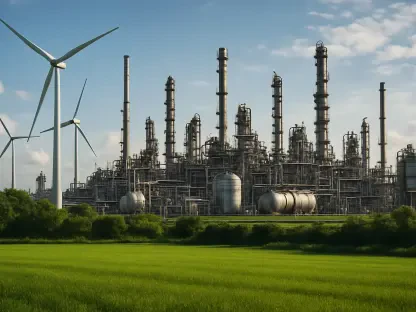Can a grid designed for the past support the energy demands of the future? With expectations that electricity demand in the United States will surge by over 150 gigawatts by the decade’s end, this question holds critical importance. As cities expand and technology proliferates, electricity becomes the lifeblood of modern society. Yet the outdated infrastructure currently managing this crucial resource faces unprecedented challenges in meeting heightened demands.
Navigating MISO’s Energy Challenges
The Midcontinent Independent System Operator (MISO) grapples with a complex matrix of rising energy needs, exacerbated by traditional energy supply methods. This challenge extends beyond immediate consumption; it is a dynamic puzzle of grid reliability, economic costs, and pressing environmental considerations. Traditional energy infrastructure, with its carbon-intensive processes, struggles to adapt swiftly enough to modern standards and consumer expectations.
Utility-led distributed energy resources (DERs) present a viable pathway through this labyrinth. These resources, which include solar, wind, and storage solutions, are increasingly becoming more than just auxiliary backups. They are emerging as essential components, reshaping how energy is distributed and consumed on a large scale.
Utility-Led DERs: Changing the Paradigm
Distributed energy resources have evolved significantly, from serving as mere reserves to becoming integral to sustainable infrastructure. This transformation is driven by utility-led initiatives that promise adaptability and cost-efficiency. Models like Xcel Energy’s Distributed Capacity Procurement (DCP) program and Exelon’s Maryland storage projects illustrate this shift. These initiatives demonstrate the versatility of utility-led programs in deploying DERs rapidly and effectively, reducing dependence on conventional, expensive energy solutions.
Utility-led efforts are redefining resource planning, integrating DERs into their foundational strategy. The foresight and investment in local energy solutions like solar and battery storage underline a move toward a future-ready grid that efficiently manages peak loads and minimizes infrastructure overloads.
Insights from the Experts
Energy professionals underscore the significance of DERs in future energy strategies. Experts hail them as a means to alleviate peak demand pressures and facilitate sustainable cost management. According to reports from the Department of Energy, Virtual Power Plants (VPPs) could potentially fulfill a significant portion of peak electricity demands, with corresponding financial benefits.
This capability to reduce peak loads presents a strategic advantage in curbing operational costs and fostering more resilient energy networks. Such insights amplify the iterative conversations on embedding DERs into broader energy blueprints, affirming their essential role in an evolving landscape.
Paving the Way for Integration
Charting the course toward DER integration requires deliberate action from MISO regulators and utility companies. This involves developing comprehensive strategies for the placement and utilization of DERs, aimed at enhancing infrastructure efficiency. Practical steps include leveraging local energy assets like solar and storage solutions, focusing on strategic locations that can support the grid during high-demand periods.
Communities stand to benefit immensely from this approach through improved grid resilience and local economic growth. By aligning state policies and regulatory frameworks to support utility-led DER models, the MISO region can achieve significant strides toward energy stability and modernization.
Concluding Reflections
The transition to an integrated energy ecosystem calls for decisive action and strategic planning. Utility-led DERs stand at the forefront of this transformation, particularly in areas like MISO, where demand and infrastructure considerations are critical. By innovating and integrating these resources, utilities lay a blueprint for sustainable energy growth, enhancing both grid resilience and community well-being.
As MISO looks at crafting its future resource strategies, leveraging utility-led DERs offers a paradigm shift capable of meeting escalating energy needs with flexibility and foresight. The pursuit of advanced distributed resources continues to shape the energy landscape in transformative, tangible ways.









